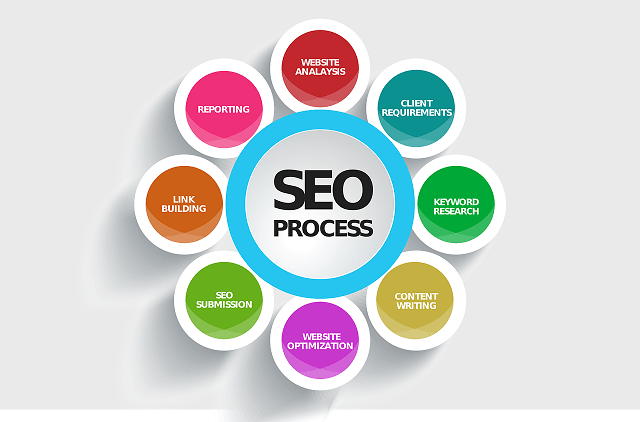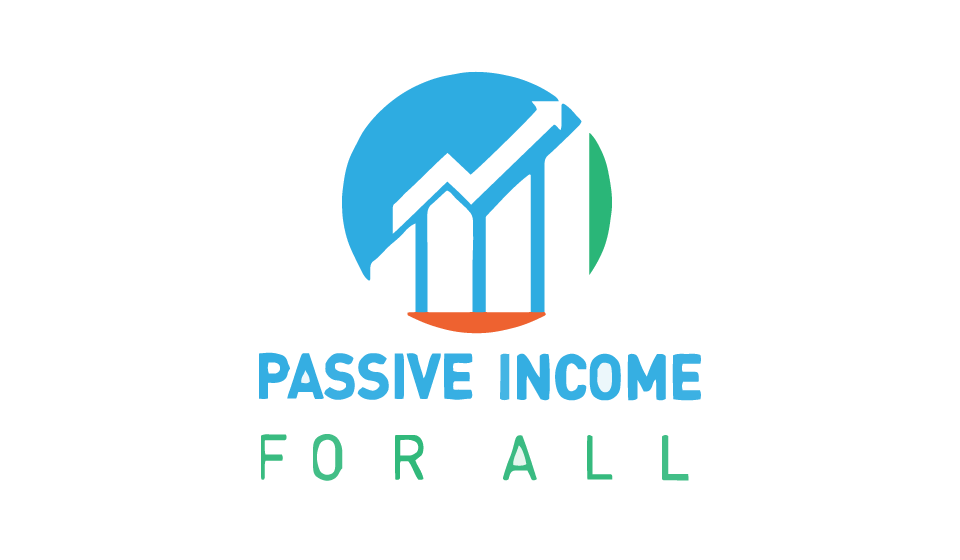Hello Folks
You have often heard me mention the term SEO. This is an anagram for SEARCH ENGINE OPTIMIZATION. What exactly is SEO?
Basically SEO, is the process whereby the search engines such as Google, Bing and Yahoo, use various ranking factors to decide where your website should be ranked. They send out “bots(short for robots) and “spiders” to crawl your site and using complex algorithms decide how interesting, useful or worthless your site is and rank you accordingly.
Remember, the higher your site is ranked , the more exposure you will get and the better are your chances of gaining sales or revenue as you will ultimately receive more traffic.
Today, I will discuss some of the important tips on to how to write SEO friendly content.
Building a website and getting it ranked takes time and effort. It’s a process, and being consistent and writing content regularly with these criteria in mind, all your hard work will see fruition.
Before I dive straight into the ways of good SEO, I want to spend some time to quickly talk about keywords.
Content is KING!
I am sure that at some point during the building of your website, you must have come across this line. It’s true indeed, the heart of a quality website is the engaging, unique content that is contained within it.
Its necessary to do a keyword search whilst we are building our quality page or post.
Remember the key here is
- Find keywords that have low competition and high traffic(or searches)
- Keyword Density is phased out, so try to get your keywords within the first paragraph, the title and URL of the article, that’s it.
- Make use of LSI keywords
⇒Learn more about the Most Awesome Keyword TOOL you will ever need. Try IT, It’s FREE!!⇐
What is LSI(Latent Semanitic Indexing)?
I know this sounds like a mouthful, but its really not that hard to understand.
Its basically synonyms for your main keywords. They help to rank your pages or posts as well.
How do you find LSI keywords?
Simple, when you do you a search for your primary keyword, look at the bottom of the page.
Can you see it?
Google list searches that are related to your main query, this is LSI.( Below is an example of LSI keywords that are related to my query “How to Build A Website.”)
TIP: If you want a solid site, try writing out an article that is central to your main keyword, then write out another one that incorporates your LSI.
Should you be interested, here is an awesome write up on LSI and SEO
Google is getting more Smarter, and more Picky..
With the constant changes in Google’s Algorithm and the 100 or so ranking factors they use, their primary focus is to give people the best search results. If you want to be selected, don’t rush to get your article out. Write something that will want to make other websites turn their attention to, and share it.
Write for PEOPLE, Help People, Teach People and YOU WILL BE REWARDED
9 Tips on how to write friendly and quality SEO Content
- Used Focused Keyword
Very simply put, use a keyword per article. A keyword can be a phrase or a word, but make sure that it makes sense. Though it fits the criteria for a selection, its no point using a keyword with incorrect grammar.
Remember I talked about Keyword Density, Google does NOT like your entire article to be stuffed up with the keyword. So use it sparingly in the places that I have mentioned above.
2. Use Awesome Images
People are visual by nature, and having some catchy and relevant images can do wonders for your posts. It gives your reader a break, whilst reading your wonderful masterpiece. You don’t want to bore them with paragraph after paragraph, do you?
Label the “alt text” of your images with the Keyword. This helps for the images to be picked up by visually impaired people and is good SEO practice.
3.Internal Links
Internal links within your pages or posts, helps the reader find out more information on your site and will get him to spend more time on your site. Even more important, is that the search engine will notice the value within your site and that you have a good framework going on.
3. Labelling and Tagging of Images
Use appropriate filenames for the labelling of images. This tells the bots what the images are all about.
Tip: Watch out when using licensed images. Make sure you pay for using them, and do the necessary attribution. There are plenty places whereby you can use FREE IMAGES too. So don’t stress too much here…
(Check out this Training on Finding Free Images for your Website)
4. Mobile Friendly
With a quarter on internet searches, around 1billion searches done on mobile devices,you would want to have a website that is optimized for good mobile responsiveness.
This can mean huge traffic for your site.
Would you not want to gain a share of this market?
At the same time, make your website appearance pleasing and welcoming to the eye.
5. Sharing Is Caring
Ever come across an article that interests and you want to share it on your Facebook or Twitter page but find no social buttons on the site?
Sadly whoever wrote that article, missed an opportunity to get free exposure. You don’t want that to happen to you, do you?
Make sure your social buttons are embedded in the easily accessible places on your article.(either on the top or bottom, or on the side of the page)
Share your post with as many relevant social platforms as you can.
Tip: Don’t just drop a link and leave! Make it engaging and briefly talk about what the article is about.
Social shares, plays a crucial role in the ranking of your site.
6. Helpful Content is the KEY
So, you got content that is easy to read and share, now, focus on helpful stuff. Things like “HOW TO ” articles or “Product Reviews.”
Outsiders within the same niche as yours may be interested in these articles and backlink it to your site.
Backlinking from other niche sites or authority sites, will give your Domain Authority a boost and pump up your website creditability. This is a Huge plus for SEO rankings.
7. Above the Fold
When you visit a website, whatever you see before you scroll down, is considered “ABOVE the Fold”
Improving user experience (UX) on your site helps to improve SEO. If you place things like ads, banners and images to an extent that it takes up a huge majority of the above the fold real estate space, you are NOT providing a very good UX.
Rather place these after the “above the fold” area, and let a fair amount of content be visible in the “Above the fold,” Trust me this will help you in the long run.
8. Headlines, Make it or Break it
Did you know?
That 2 out of 10 people will click on your article, depending on how strong your headline is. You can’t expect to get visitors with a boring and dull headline.
So, what elements should your headline contain?
- It must create a feeling with the reader, or some sort of emotion,
- As I discussed above “how to ” “ why” words suggest curiosity and have “power” in them,
- A balance of common “you, yourself,for” and uncommon words ” discover, unlock ,awesome.”
Conclusion
You have learned some of the core principles that one needs to know on how to write SEO friendly content.
I know that this seems like a lot to take in, and yes it is. In fact there are a lot more things to learn. This is just an introduction to get you on your way. If you would like to learn more then check out the Wealthy Affiliate University.
This is where I learned all of this stuff and more. There are videos, modules, classrooms to teach, and so much more about SEO.
Try out the FREE trial of Wealthy Affiliate here or check out my Review to learn more here.
One thing is for certain, over time as you practice writing, these things will become second nature to you, and it becomes fun and exciting.
You look forward to see where you are ranked, sometimes you can get ranked on the later pages, but don’t let it discourage you. It happens and is part of the process.
I trust that you enjoyed this article. Did you find it helpful? Would you like to comment or ask something? No problem. Just do so in the comment box below and I will get back to you.
Thanks, you have been a star.
See you around
Roopesh
How to Make Money Selling Music Online

Great article with some solid advice. You are right about content being king. The problem is a lot of people struggle with creating content and this makes it hard for them don’t you think? I have never heard of LSI before. Is this what Kyle means when he is talking about brainstorming? I didn’t realize until now that it actually had a name of it’s own. I found your tips on writing quality SEO content very helpful. Thanks for sharing this.
Hello Margaret
Yes, LSI are the related searches to your primary ones. These help me a lot when I am stuck and need topics for some new content. I do a keyword search first though, to see if they are viable to use or not.
Thanks and glad that you found it helpful.
Regards
Roopesh
Thank you for sharing this information on SEO.
It is indeed very important for people with an online business to understand these.
What according to you are the best plugins for social sharing?
Many people tell me that shareaholic is one of the best out there!
Thank you for information on above the fold as many people do not know about it in detail!
Thanks,
Suhail.
Hi Suhail
You are welcome.
There are lots of social share plugins that one could use.The important thing to remember, is that you don’t want to have lots of plugins on your site.This will mess with the loading time of your site.
People will be turned off from visiting your website, and you will eventually lose traffic.
I recommend the Sumome plugin.Its has socialshare capabilities and it’s has the ability to create opt in forms for subscribers.So you looking at killing two birds with one stone.
Hope this helps.
Regards
Roopesh
SEO has changed quite a bit over the last few years, and I think we, as bloggers, should be most interested in the changes brought to SEO, as we want our content to rank. Any help appreciated, thank you very much for the tips and I’m sure I’m not the only one finding them helpful.
Much success!
Hi Aless
Absolutely, we have to keep up with the changes.In the next couple of months of so, I would have to update this post as a result.
Glad you found it helpful.
All the best.
Roopes
This is pretty much the main aspects of a SEO-friendly site right there. I completely agree with all the points you made.
But I heard that backlinking has become uneffictive after Google’s recent update. There are a lot of people talking about this.
Yet some many folks still praise backlinks, so what’s your take?
Hi Julius
Thanks for your comment.
With regards to backlinking, there are some ‘not so’ nice to go about getting them.This is when Google will clamp down on you.
Hope this answer your question.
Take Care
Roopes
Great tips. I was wondering if LSI keywords were still relevant for SEO and you confirm it here. I have first learned this with the guys of OMG Machine and then… George Brown from Google Sniper even if his teaching and tactics are greatly questioned in the affiliate marketing world. At least for this one he’s on the right path. So I will continue do this,
Hi Guy
Yes, I would certainly use LSI, keywords. it helps to reinforce my article and gets me to rank on other terms.
All the best.
Regards
Roopes
Hi Roopesh,
This has been one of the best post on how to write friendly content. I was keen to know about the keyword density. I use Yoast SEO and when it does an analysis of my content, it tells me that my keyword is low although it appears about 8 times in the post. Do you think Yoast is a little behind given the changes with how Google is ranking posts/articles? Thanks again for a great post.
Hi Rodney
Wow!!Appreciate the compliment.
I personally have no experience with Yoast.I use the All in one SEO.
Till today, I have not focused at all on keyword density.I placed my keywords in the URL, meta description, first paragraph and somewhere at the end of the article.
Thanks
Roopes
Hi Roopesh,
Interesting post! A question, do pictures have much effect on how well your content ranks in Google?
The other thing I’ve been hearing a lot about is making sure that your content is mobile friendly or compatible. Do you know if sites that aren’t mobile compatible can still get decent ranking in Google?
Hi Nate
By correctly labeling the alt Text of your images, you are allowing Google to find your article.This also helps for visually impaired people to be directed to your site.In my opinion, it is more the content that gets you ranked onto Googles pages.
Absolutely, Mobile responsiveness is a key requirement for SEO.It creates a better Use Experience and ultimately opens your site to a bigger audience.
Hope this answers your questions.
Take Care
Roopesh
Pretty spot on. All of the 8 tips are helpful. SEO may come across as something that’s very technical at first but it gets better over time. All the steps are clear-cut and it’s simple to do. Just gotta do it to make sure the site is optimized for the search engine. I do agree when you said content is king.
Hi Andrew
Thanks a mill for stopping by.
Yes, I believe writing regular and engaging content is what will allow one’s site to gain authority and get the traffic that one desires.
Take Care
Roopesh
There are a number of things I can take from this article to help me to improve my website. I definitely saved this page. I was completely unfamiliar with LSI keywords so this definitely sounds like some training I need to complete. I have been so focused on writing content lately.
Its means a lot to me, that you have found this article helpful.Only glad to be of service.
Yes, LSI whilst is important, it should NOT replace your natural writing process. Google ‘evolves’ at an alarming rate and if you try to just stuff these words in, it will pick it up.
At the end of the day, you would want to help the reader and provide unique content.
Google will reward you if you always have this mindset.
Thanks for stopping by.
Regards
Roopesh